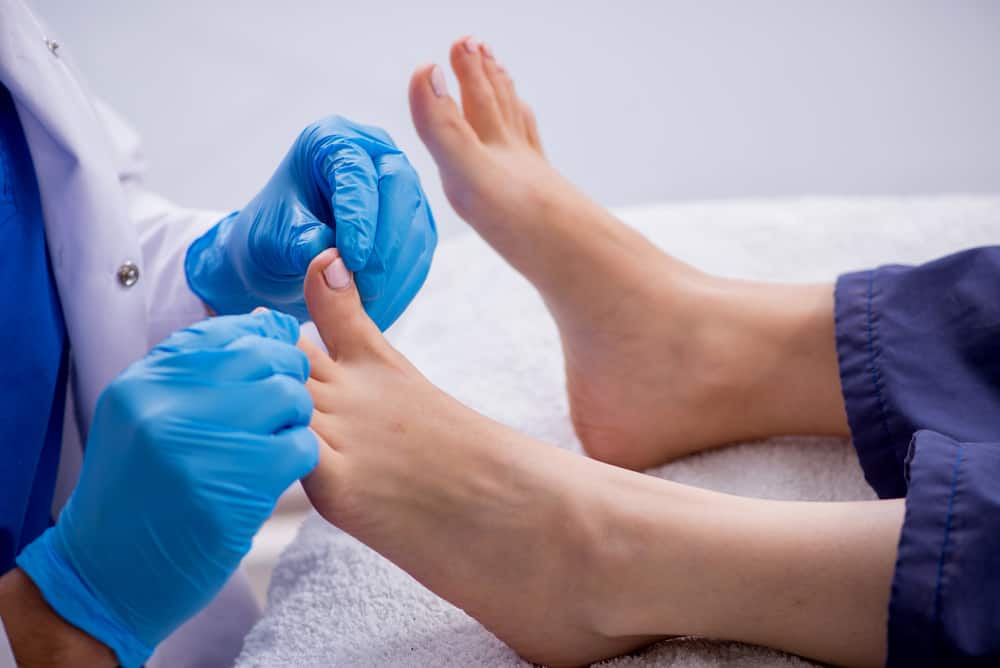Nail mold and fungus are common nail conditions affecting millions worldwide. While these conditions may not be life-threatening, they can be uncomfortable, unsightly, and even painful if left untreated. Luckily, there are several ways to identify and treat nail mold and fungus, and prevent their recurrence in the future.
This article will discuss the five simple ways to identify and treat nail mold and fungus. We’ll start by discussing the signs and symptoms of nail mold and fungus, followed by how to treat them effectively. Lastly, we’ll look at the preventative measures you can take to keep your nails healthy and beautiful.
How to Identify Nail Mold and Fungus
Nail mold and fungus are caused by an overgrowth of fungi, which can thrive in warm, moist environments. Here are some ways to identify nail mold and fungus:
Look for Discoloration and Deformation
One of the most common signs of nail mold and fungus is discoloration and deformation of the nails. Infected nails may turn yellow, brown, green, or even black. The nails may also become thickened, cracked, or crumbled, emitting a foul odor.
Pay Attention to Symptoms
Nail mold and fungus can cause a range of symptoms. Some people may experience itching or burning around the nail, while others may experience pain or discomfort. Redness or swelling around the nail may also be present.
Consider Risk Factors
Certain risk factors may increase your chances of developing nail mold and fungus. These include:
- Age
- Weak immune system
- Poor nail hygiene
- Fungal infections in other parts of the body
If you notice any of these signs or symptoms, it’s important to seek treatment right away. Early treatment is essential for preventing the spread of the infection and reducing the severity of the symptoms.
How to Treat Nail Mold and Fungus
Now that you know how to identify nail mold and fungus, here are five ways to treat them:
Use Over-the-Counter Antifungal Treatments
Over-the-counter antifungal treatments can be effective in treating nail mold and fungus. These treatments come in various forms, including topical creams, lotions, or gels, oral antifungal medication, and antifungal nail polish. Follow the instructions carefully and continue using the treatment as directed. It’s important to note that these treatments may take several weeks or months to work fully, and it’s essential to continue using them even after the symptoms have disappeared to prevent a recurrence.
Try Home Remedies
If you prefer a natural approach, several home remedies may help treat nail mold and fungus. Tea tree oil is a popular remedy, as it has antifungal properties. Applying a vinegar soak or baking soda paste to the infected nail may also be effective. However, it’s important to note that these remedies may only work for some and may take longer to show results than over-the-counter antifungal treatments.
Practice Good Nail Hygiene
Good nail hygiene is essential for preventing and treating nail mold and fungus. Keep your nails clean and dry, trim them regularly, and use clean and sanitized tools. Avoid sharing personal items like nail clippers, socks, and shoes. It’s also essential to avoid biting your nails, as this can introduce bacteria and fungi into the nail bed.
Consider Prescription Medications
Your doctor may prescribe stronger antifungal medications if over-the-counter treatments and home remedies do not work. These medications may be topical or oral and may be more effective in treating stubborn nail mold and fungus. However, they may also have more severe side effects than over-the-counter treatments, so following your doctor’s instructions carefully is important.
Consider Nail Removal
In severe nail mold and fungus cases, your doctor may recommend removing the affected nail. While this may sound extreme, it can effectively eliminate the infection and prevent it from spreading to other nails. After the nail is removed, your doctor may prescribe topical or oral antifungal medication to prevent the infection from recurring.
Prevention Tips
Prevention is key when it comes to nail mold and fungus. Here are some tips to keep your nails healthy and fungus-free:
Wear Appropriate Footwear
Wear shoes that fit well and are made of breathable materials. Avoid tight, enclosed shoes and opt for shoes made of natural materials, like leather or canvas. Wear moisture-wicking socks to keep your feet dry.
Keep Nails Clean and Dry
Dry your feet and nails thoroughly after bathing or swimming. Change your socks and shoes frequently, especially if your feet tend to sweat. Avoid prolonged exposure to water, as this can create a moist environment that encourages fungal growth.
Practice Good Nail Hygiene
Good nail hygiene is essential for preventing and treating nail mold and fungus. Keep your nails clean and dry, trim them regularly, and use clean and sanitized tools. Avoid sharing personal items like nail clippers, socks, and shoes. It’s also essential to avoid biting your nails, as this can introduce bacteria and fungi into the nail bed.
Be Careful at Nail Salons
If you frequent nail salons, be sure to choose a salon that follows proper hygiene practices. Look for a salon that sterilizes its tools between clients and uses disposable tools whenever possible. Also, avoid getting acrylic or gel nails, as these can trap moisture and create an ideal environment for fungal growth.
Maintain a Healthy Lifestyle
Finally, maintaining a healthy lifestyle can also help to prevent nail mold and fungus. Eat a well-balanced diet rich in vitamins and minerals, exercise regularly, and get enough sleep. This will help to boost your immune system and reduce your risk of developing fungal infections.
Conclusion
Nail mold and fungus may be common but are also preventable and treatable. You can keep your nails healthy and beautiful by following these five simple ways to identify and treat nail mold and fungus. Remember to practice good nail hygiene and take steps to prevent future infections. If your symptoms persist, be sure to consult a healthcare professional for further treatment. With proper care and attention, you can keep your nails fungus-free and enjoy beautiful, healthy nails.

